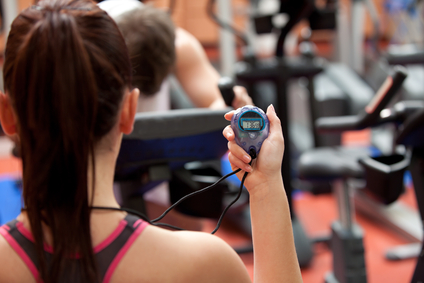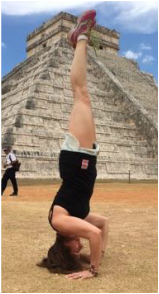Enter, high-intensity interval training that is easy on the body (ie, knees, joints, etc...). Researchers have found that there is a direct correlation between reduced aging and high-intensity exercise (Mechanisms of Aging and Development). In the same study, they found the immune system is strengthened by this type of exercise and it possibly provides the basis for resistance to infections.
A 2003 study published in the journal Sports Medicine found that "exercise intensity above lactate threshold and for a minimum of 10 minutes appears to elicit the greatest stimulus to the secretion of HGH." HGH or human growth hormone is described by some as the key to slowing the aging process. It is known to be responsible for increasing bone density and muscle mass and decreasing body fat.
I first read about this in an article by Dr. Mercola who said he lost 17 pounds of body fat and gained 5 pounds of muscle in a short time by changing nothing other than how he exercised. He added what he calls the Peak 8 to his routine only three times a week. I was hooked and began adding this to my own routine, seeing dramatic results as well.
So, how do you do Peak 8? Get on any cardio machine. I like to use the elliptical as my heart rate seems to go up the highest here. It's also very easy on my body which I choose to be gentle with. I simply warm up for 2 minutes at a fairly slow pace. Then I increase the resistance and go all out as hard as I can for 30 seconds. Go so hard that at the end of the interval, you couldn't go another few seconds. You should not be able talk during your intervals. After 30 seconds, reduce the resistance and go slowly for 90 seconds. Then again increase the resistance and go all out for 30 seconds. Repeat this cycle 8 times and then go slowly for about 3 minutes to recover and bring your heart rate back down.
If you do not have access to an exercise machine, you can do this outdoors while walking or running or even in the garage with a jump rope.
"Be mindful of your current fitness level and don't overdo it when you first start out. Also keep in mind that there's no "magical" speed here. It's entirely individual, based on your current level of fitness. Some may reach their anabolic threshold by walking at a quick pace, while others may need to perform a mad-dash to get the same effect.
If you are out of shape you may want to start with just two or three repetitions, and work your way up to eight, which is where the magic really starts to happen. If you can do a Peak 8 workout twice a week, and follow a healthy diet, you will increase your production of growth hormone" (Mercola).
The key here is that you get into your anaerobic heart rate zone during the high-intensity portion of your training. Your heart rate will get higher with each repetition, so your goal will be to have it at the anaerobic goal rate by the 8th repetition.
Consumption of sugar will shut off your body's ability to produce HGH. Instead, consume a diet of healthy fats, proteins and vegetables. Avoid eating two hours prior to Peak 8 exercise. I do mine first thing in the morning on an empty stomach. For maximum HGH production, make sure you are also well hydrated and getting adequate sleep.
It is best to practice Peak 8 along with strength and core training. I do a mixture of yoga and weight training as well as taking walks or hikes and a swim here and there. For maximum efficiency if you are low on time, do Peak 8 one day and weight training the next. Make sure you are stretching too!
My favorite method of weight training where I get the best results is laid out in a book called The New Power Program by Dr. Michael Colgan. The other book I highly recommend is How to Eat, Move and Be Healthy by Paul Chek. This is where I learned to work in as well as working out and how to eat for maximum health.
Maria Rippo is a Transformational Weight Loss & Wellness practitioner with an online as well as a local practice in Bothell, WA.This article Copyright 2013 by Maria Rippo, all right reserved. To replicate or use any portion of this article, please do so in its entirety including this text or contact the author at [email protected].



 RSS Feed
RSS Feed